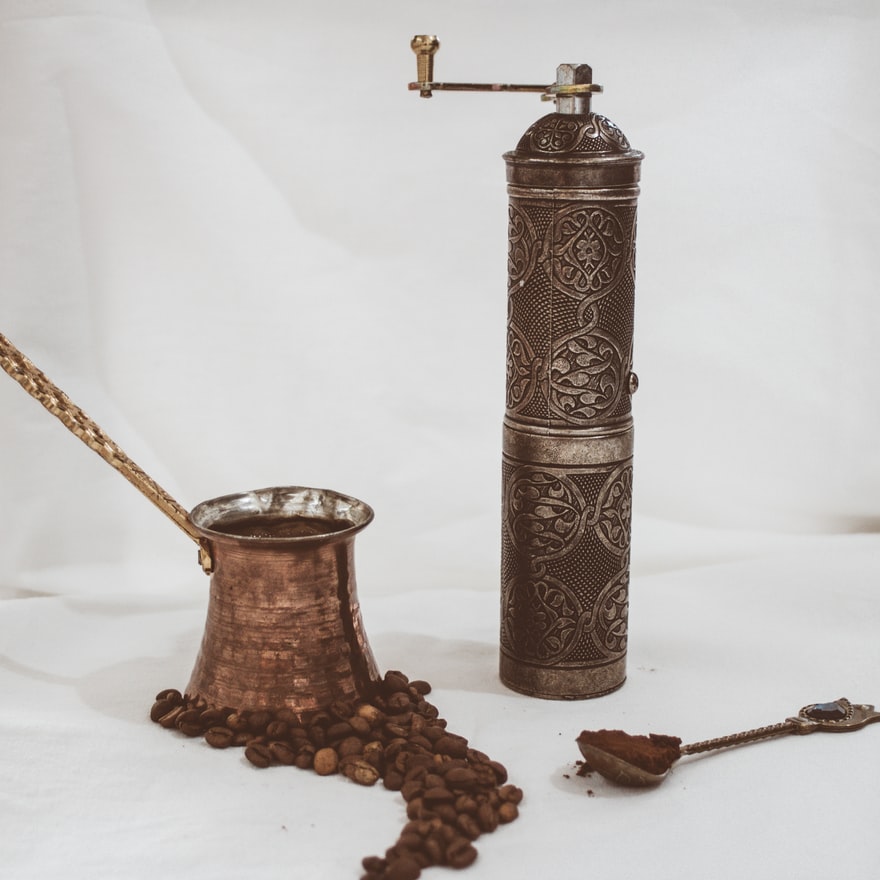Tradition is not just a drink, it’s an experience. It is one of the oldest traditions, a part of culture and heritage. The origins of coffee houses date back to the heyday of the Ottoman Empire, and they had nothing in common with the cafés now serving lattes, cappuccinos and other fancy drinks with different kinds of milk at every corner.
History
The first coffee house in the Ottoman Empire was probably built between 1554-1555, and it was situated near the trade and business areas where people of all social classes gathered. Coffee houses were a place for socialising, reading and supporting the arts.
As the coffeehouse culture spread, they became thematic and brought people together based on their interests – social, political, educational or simply a place for exchanging information. For example, neighbourhood coffee houses were linked to religion and were often located next to mosques.
Guild coffee houses were often frequented by craftsmen, where they gathered to socialise and discuss politics. Another variety was the minstrel coffee houses, which attracted people from the arts, where local and travelling musicians sang songs and ballads. So-called firemen’s coffee houses were a social area for firemen, and over time this format was transformed into a 24-hour service that remained open all night long during Ramadan.
Traditionally, Turkish coffee is described as a unique preparation method which distinguishes it from other coffees. The recipe calls for brewing it in copper coffee pots, or turbokas, over low heat. This ancient method was already introduced in the Ottoman Empire.
By the way, the traditional type of a citron has not changed much over the years. It has a long handle, making it easier to hold on the fire, a large enough base to make the most of the heat of the fire, and a narrow neck so that not a drop spills out of the cup.
What affects the taste of coffee
Roasting
The roasting process is said to be one of the most important factors affecting the taste of coffee.
There are three main roasting grades. The lightest roast has more of a ‘pristine’ fresh and bright flavour, aroma and sourness. The darkest roast gives the drink a bitter taste. And the medium one combines nuances of chocolate and caramel flavours, with citrus notes, and is the golden mean for those who like balance.
Grinding
For many years coffee beans were ground in a mortar and press. Then came manual mills. Luckily, they’ve been replaced by electronic grinders.
Normally an extra fine grind is used for making coffee in a pressure cooker – its particles make the drink thicker, firmer and velvety. It’s almost impossible to grind coffee beans in this way, so you may prefer to purchase ground coffee.
Another important thing is the uniformity of the particles. If the grain size differs a lot, the taste will be distributed unevenly, some will brew faster, some slower and it will be almost impossible to predict how the coffee will taste.
Ground coffee VS Ground coffee
Many people think that ground coffee is more aromatic and full-bodied than coffee beans because they are ground just before brewing. But in fact, the main difference between them is only in the way they are stored. Ground coffee can be just as aromatic if it is stored in the right conditions. This is where modern technology comes in. Vacuum allows to keep all qualities of coffee, hermetic sealing is the main ally of ground coffee, because modern packaging does not let coffee powder get in contact with air.
In addition, ground coffee saves you time and energy, the risk of making a brewing mistake (and making it too strong, for example) is much lower than when ground and brewed with coffee beans.
How to choose a ground coffee for the coffee pot
First, it’s worth deciding on the type of coffee you’re going to brew in your carafe. And we advise you to opt for arabica coffee. When the oriental coffee style was born, it was brewed for many decades in Arabica, using expensive and high quality types.
Unlike Arabica, Robusta is bitter, smells less pleasing (and aroma is also part of the coffee-making magic) and has a higher strength.
In the arabica category, there are many variations. Don’t go chasing the most expensive one on the shelf in a shop, it’s better to look at the composition, because there’s no guarantee that the more expensive one will also be better in terms of composition.
When choosing you should pay attention to the roast quality as it is usually written on the packaging. A roast which is too dark can be bitter, while a light roast can be sour. A copper jug can also produce a subtle change in taste profiles – the mustiness will be stronger, the sourness slightly lessened.
How to make coffee in a pressure cooker at home
For an oriental coffee, take a copper still, fill it with 2/3rds of the water (about 100g) and place it on the cooker. While the water is heating up to 50 degrees, measure out the coffee. The ratio of water to coffee should be 10:1, so you only need 10 g.
When the water has reached 50 degrees, pour the coffee into the water, stir it and leave it to simmer over a gentle heat for 3 minutes. During this time, the liquid will have reached 95 degrees and the crema will start to rise, curling up the walls into the centre. Your coffee is now ready. Carefully pour it into a warmed cup and enjoy.

